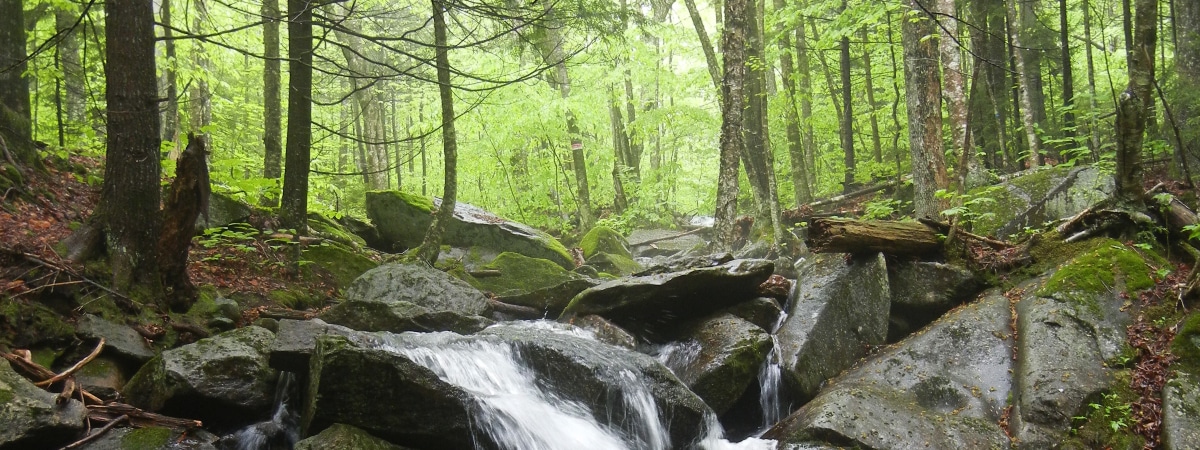
“Continuous, truly long-term studies are exceedingly rare in ecology. Faced with greatly increasing problems of human-accelerated environmental change, the Hubbard Brook approach to understand complicated ecosystem function is more valuable than ever.” —Gene E. Likens, co-founder of the Hubbard Brook Ecosystem Study
Overview
The Hubbard Brook Ecosystem Study is a long-term, collaborative research program focused on improving our understanding of the response of northern forest ecosystems to natural and anthropogenic disturbances. The study is supported by the National Science Foundation's Long Term Ecological Research program and the principal research site is the Hubbard Brook Experimental Forest, a 7,800-acre field site in the White Mountains of New Hampshire, operated by the USDA Forest Service. The research is extended through comparative studies with other sites in the northeastern U.S. and throughout the world.
The research involves long-term studies of the biological composition, productivity, hydrology, biogeochemistry, and food webs of forest and stream ecosystems. Results of the research are used to test and revise conceptual and quantitative models of ecosystem functioning, to inform policy and management decisions regionally and nationally, and to bring ecological knowledge to students and teachers at levels from K-12 to graduate students and postdoctoral fellows.
A Public–Private Partnership
The Hubbard Brook Ecosystem Study is a partnership among the USDA Forest Service, the National Science Foundation’s Long Term Ecological Research (LTER) and Long Term Research in Environmental Biology (LTREB) programs, the Hubbard Brook Research Foundation, and scientists from research institutions throughout the world.
The Hubbard Brook Experimental Forest was designated in 1955 by the USDA Forest service as a center for hydrologic research. The Hubbard Brook Ecosystem Study was co-founded in 1963 by aquatic ecologist Gene E. Likens, terrestrial ecologist F. Herbert Bormann, soil scientist Robert S. Pierce, and geologist Noye Johnson.
Welcome!
New scientists, students, and other community members are welcome! Read more About Us. To learn more about the LTER program and other research projects, check out the Conceptual Model and explore the Online Textbook: A Synthesis of Scientific Research at Hubbard Brook.
Hubbard Brook: The Story of a Forest Ecosystem, by Richard T. Holmes and Gene E. Likens is a synthesis of more than 50 years of Hubbard Brook research, written for a general audience.
